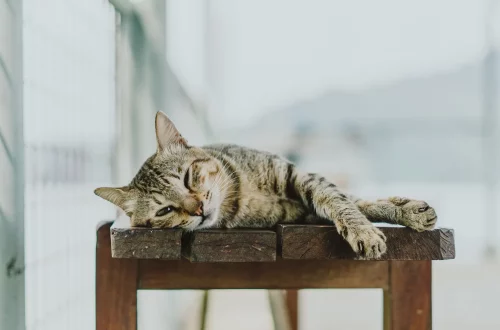
Does Cold Weather Kill Fleas or Just Delay Their Return?
As the days grow shorter and temperatures dip, many pet owners find themselves questioning the impact of cold weather on fleas. These tiny, resilient pests can cause significant discomfort for pets and their owners alike. Understanding the lifecycle of fleas and how seasonal changes affect their behavior is crucial for effective pest control. The common belief is that frost and freezing temperatures will eliminate fleas, but the reality is more nuanced.
Fleas thrive in warm, humid environments, making their life cycle efficient in spring and summer. However, as cold weather sets in, their activity levels may decrease, leading many to assume that they are gone for good. This misconception can result in a false sense of security among pet owners who may neglect preventive measures during the winter months. While it is true that cold weather can impact flea populations, it is essential to recognize that these pests have evolved to endure harsh conditions and can re-emerge as soon as temperatures rise.
In this article, we will explore how cold weather affects fleas, what happens to them during winter, and the best practices for keeping your pets flea-free year-round.
Understanding Flea Lifecycle and Behavior
To effectively combat fleas, it is important to understand their lifecycle and behavior patterns. Fleas go through four stages: egg, larva, pupa, and adult. This lifecycle can take as little as two weeks to several months, depending on environmental conditions. Adult fleas lay eggs on their host, which then fall into the environment, such as carpets, bedding, and cracks in the floor.
Larvae emerge from the eggs and begin to consume organic debris, including adult flea feces, which is rich in nutrients. The larvae thrive in dark, humid areas, making homes and yards ideal breeding grounds. After a few days, they spin cocoons and enter the pupal stage, where they can remain dormant for extended periods. This pupal stage is particularly critical, as fleas can survive in this form until they sense the right conditions for hatching, such as warmth, carbon dioxide, and vibrations from nearby animals.
During colder months, adult fleas may become less active, but they do not perish. Instead, they rely on the warmth and shelter provided by pets and homes to survive. Although cold weather can slow down flea reproduction, it does not eradicate them completely. As soon as temperatures rise again, fleas can emerge from their cocoons and quickly repopulate.
Understanding this lifecycle is vital for pet owners, as it explains why a proactive approach is necessary even in winter months. Regular treatments for pets and thorough cleaning of living spaces can help prevent flea infestations from taking hold, regardless of the season.
The Impact of Cold Weather on Flea Populations
Cold weather does have an impact on flea populations, but it is not as definitive as many pet owners believe. When temperatures drop significantly, fleas may become less active or enter a state of dormancy. However, this does not mean they are entirely eliminated. In fact, adult fleas can survive in temperatures as low as 33°F (1°C) for short periods of time, especially if they are sheltered indoors.
Furthermore, the presence of pets means that fleas have a reliable source of warmth and blood to sustain themselves during colder months. Inside homes, where temperatures are regulated, fleas can continue to thrive and reproduce. This is why many pet owners find that their pets may still suffer from flea infestations even in winter.
It’s also important to note that different regions experience varying degrees of cold weather. In milder climates, fleas may remain active throughout the winter, making it crucial to maintain preventive measures year-round. In harsher climates, while flea activity may decrease, they can still survive in sheltered environments, waiting for the right conditions to emerge.
In summary, while cold weather can slow down flea activity and reproduction, it does not kill them outright. Pet owners must remain vigilant and maintain flea control measures to ensure their pets remain protected, regardless of the season.
Effective Flea Prevention and Treatment Strategies
Given the resilience of fleas and their ability to survive cold weather, it is imperative to adopt effective prevention and treatment strategies. Here are some essential steps pet owners can take to keep fleas at bay throughout the year:
1. **Regular Veterinary Check-ups**: Schedule regular veterinary visits for your pets. Your veterinarian can recommend effective flea prevention products and treatments tailored to your pet’s specific needs.
2. **Year-round Preventive Treatments**: Use veterinarian-recommended flea prevention treatments year-round. These can include topical treatments, oral medications, or flea collars. Consistency is key, as it can take time to break the flea lifecycle.
3. **Thorough Cleaning**: Regularly clean your home to reduce flea eggs and larvae. Vacuum carpets, rugs, and upholstery frequently, and wash pet bedding in hot water. This not only helps eliminate fleas but also their eggs and larvae.
4. **Outdoor Maintenance**: If you have a yard, maintain it by mowing the lawn regularly and removing debris where fleas can thrive. Consider using outdoor flea control products if your pets frequently roam outside.
5. **Monitor and Respond**: Keep an eye on your pets for signs of fleas, such as excessive scratching or biting. If you suspect a flea infestation, act quickly to treat both your pets and your home to prevent the situation from worsening.
By implementing these strategies and remaining proactive, pet owners can effectively combat fleas and ensure their pets remain comfortable and healthy, regardless of the season.
Conclusion: The Importance of Vigilance in Flea Control
In conclusion, while cold weather can influence flea activity, it does not eliminate them entirely. Fleas have adapted to survive in various conditions, and their lifecycle allows them to remain dormant until favorable conditions return. This resilience emphasizes the importance of ongoing vigilance and preventive measures throughout the year.
Pet owners must recognize that the battle against fleas is continuous. By understanding flea behavior, implementing effective prevention strategies, and maintaining a clean living environment, you can protect your pets from these pesky parasites. Remember, even during the colder months, it is essential to stay proactive in your flea control efforts to ensure your pets remain free from discomfort and health risks associated with flea infestations.
This article is intended for informational purposes only and does not constitute medical advice. For any health concerns regarding your pets, please consult a veterinarian.




